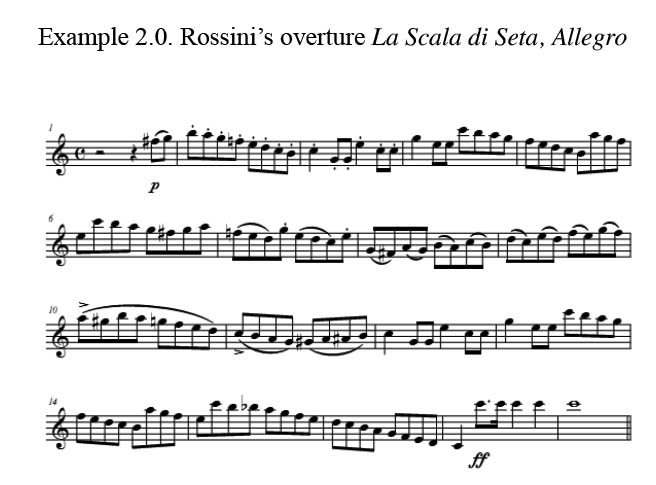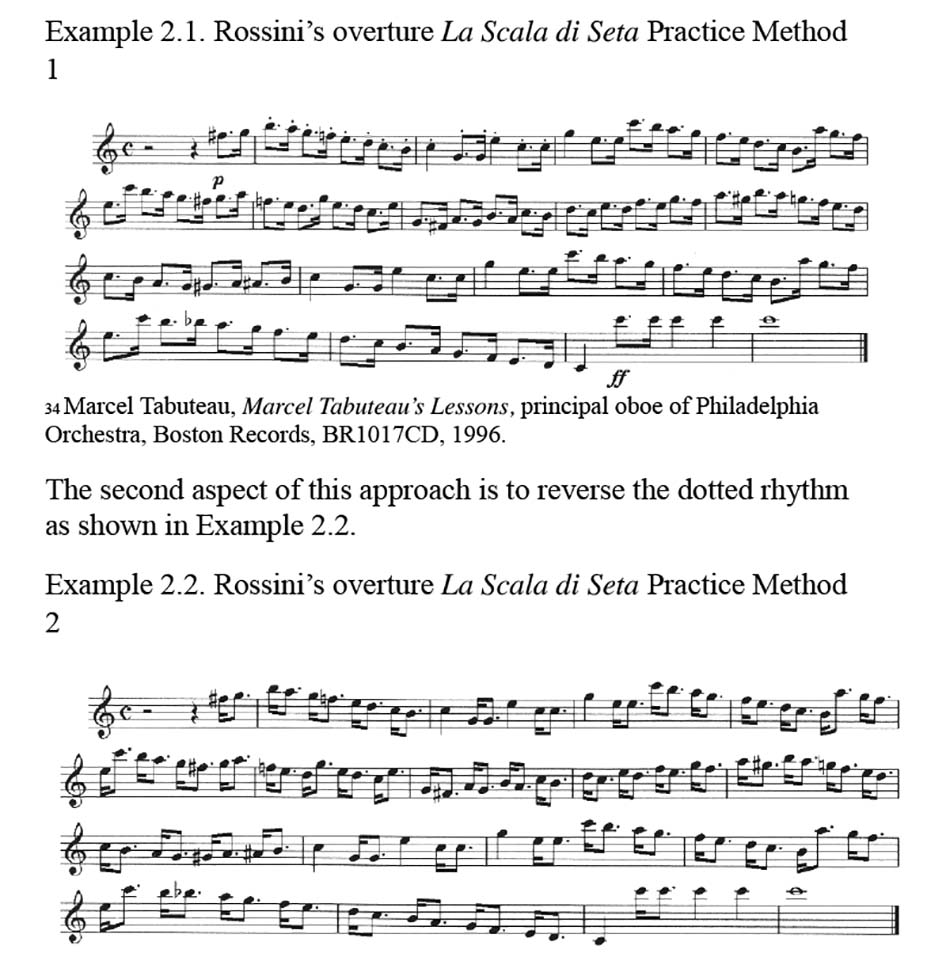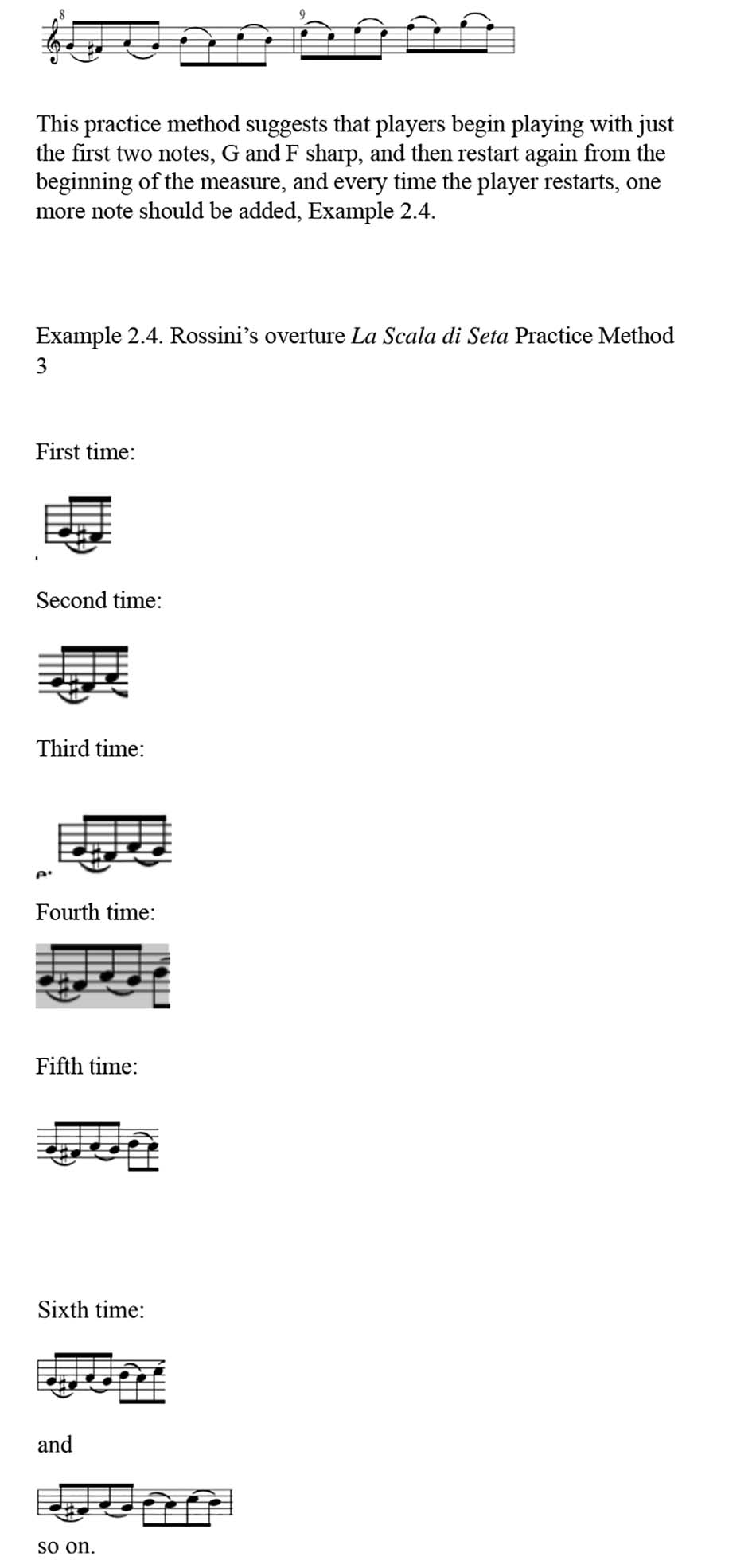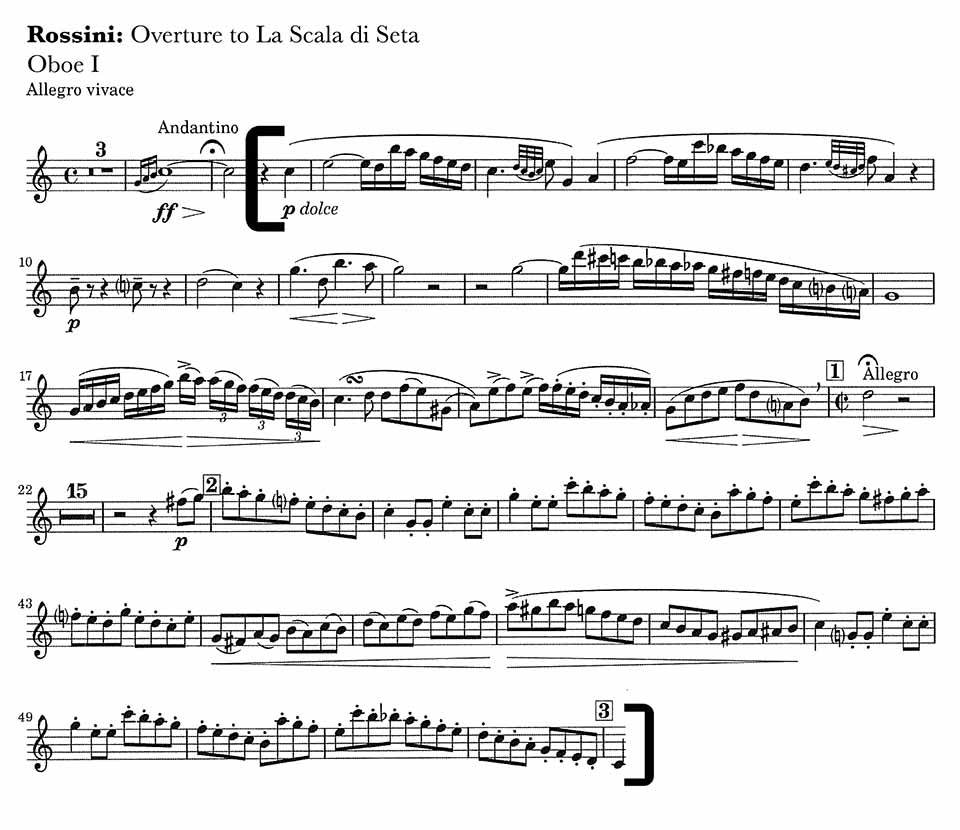Recordings:
Herbert von Karajan: Berliner Philharmoniker
Piero Gamba: London Symphony Orchestra
George Szell: Cleveland Orchestra
Eduad van Beinum: Royal Concertgebouw Orchestra
Pedagogy:
AUDITION PREPARATION FOR OBOE- La Scala di Seta
Dr. Shen Wang
Chair of the Wind Department,
Renmin University of China School of Art
At a master class in the Manhattan School of Music, the principal oboist of the Philadelphia Orchestra, Richard Woodhams, stated emphatically, “The candidate who plays everything printed on the page will mostly advance to the later rounds. It is crucial to play everything with good intonation and more importantly with a
steady tempo” 32 . The statement from the legendary player who has won mostly every audition he has attended stresses the importance of technical preparation.
The methodology of technical preparation for oboe auditions will be approached from four aspects: fast moving passages; rapid tonguing passages; extreme register attacks; and melodic passages.
Fast Moving Passages
The main focus of the section is to help the candidate improve his or her fingering accuracy when performing technically challenging excerpts. The author chose to approach this challenge by demonstrating a few different fingering practice methods using selected audition excerpts.
The oboe solo in the allegro section from Rossini’s overture to the opera La Scala di Seta, Example 2.0, appears on most orchestral audition lists. This excerpt contains multiple challenges. The first difficulty is to play every note with clarity and a steady allegro tempo. The second difficulty is consistent tonguing.
Suggestions on how to deal with the former challenge will be introduced in this section.
Joseph Robinson, principal oboist of the New York Philharmonic, suggests that the use of a metronome is critical to maintain an excellent level of preparation. In a master class Robinson stated, “I play everything with a metronome once a week, to keep myself on the right track.” 33 This comment by a performer of such immense talent and success validates all suggestions to frequently utilize a metronome in practice. Robinson has held a position in a major
orchestra for over twenty years, and is still playing everything with a metronome once a week.

Herbert von Karajan: Berliner Philharmonkier:
32 Richard Woodhams, “Oboe Auditions” (lecture, Manhattan School of Music,
New York, NY, February 15, 2002).
Marcel Tabuteau’s statement, “Finger with your fingers, and tongue with your tongue” is simple and straightforward advice. It implies quite literally that playing notes is mainly fingering work, and achieving correct articulation is tonguing work 34 . Based on this interpretation, the author believes that when working on challenging fingering passages, one should try to temporarily leave the tonguing problems out of practicing. This can achieve practicing the fast technical passages with as much slurring as possible so that the fingering challenge is being isolated and addressed without the interference of the tonguing actions. This will help to avoid the confusion that any tonguing problems may contribute in a fast fingering section. By practicing in this manner the candidate may more clearly identify which fingering shift may still require additional attention.
The first method of practicing the La Scala di Seta excerpt is to change rhythms, keeping the quarter-notes as they are, and changing every other eighth note into a dotted-eighth note, Example 2.1.

The third practice method will focus on dealing and solving a shorter but more problematic section from excerpts, Example 2.3. Due to the variety of technical ability from different candidates, the author will pick one section of the excerpt as an example based on a hypothetical assumption.
Example 2.3. Rossini’s overture La Scala di Seta, Allegro, mm. 8-9

This method requires the player to work on the difficult section multiple times in succession. It also strengthens the candidate’s ability to concentrate during this repetitive procedure.
Share your #GigOfTheWeek:
Follow @PerServicePodcast on Instagram
Add Your Voice:
Either written or recorded




